How To Paint Abstract Art
Source(Google.com.pk)
How to paint abstract art:
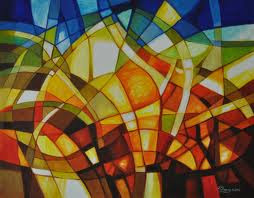.jpg)


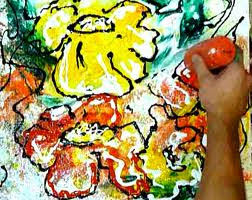
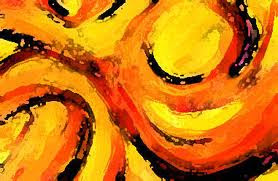
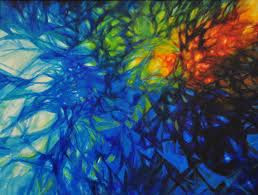
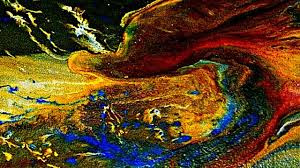

You don't have to have Picasso's imagination to create an abstract art painting. How to paint abstract art is the topic and in a sense abstract art is the most forgiving style of all, because anything goes, as long as your abstract artwork can give you the feeling you have expressed yourself. So fetch your brush right now - and a sheet of paper. You can also use canvas, of course, which is more expensive.
If you use paper, then the kind of paper you need depends on the medium you use. For starters I recommend acrylic paint. It dries quickly so you can overpaint your creation many times during one session. Using oil paint can get messy because it won't dry at all during one session and the beginner will end up mixing all paint he/she has into a grey-brown abstract art blur.
You can buy paper that is primed for acrylics or prime a sheet of ordinary paper (not too thin, please) yourself with acrylic medium. In the latter case, just apply a thin layer of medium (don't dilute it) and let it dry, but I recommend the former.
For paint, get yourself the cheapest acrylic paint you can find because we're assuming you're only trying to amuse yourself at this point and with cheap paint you can splash it around freely and fun and freedom are king in abstract art.
One of the keywords in our approach to abstract art is spontaneity. This means letting your brush take control, unearthing visions from the depth of your nervous system like a shaman in trance. That is one side of abstract art. The other side of abstract art - and of any other kind of art - is using your intelligence to guide your animal instincts.
Now, intelligence is a very nasty word, evoking images of geeks, nerds and other professors, but let me tell you this: You possess intelligence. And you're going to use it to paint abstract art, or else you'll end up an abstract expressionist with loads of talent but with helpless paintings. What we need is a plan.
What would you like to paint? Who would you like to be? Kandinski, Mondrian, Modigliani, Picasso, Klee, Chagall? To be a copy-cat is an excellent way to start painting, not just abstract art. Art historians attribute the success of French art to young students going to the Louvre, copying the old masters. This is legitimate as long as you know the difference between educational copying and forgery. Copying is too strong a word for our purposes, by the way, because we will try to stimulate your imagination, but with a plan - and a little help.
Suppose you like Chagall. Suppose you feel like painting a Russian peasant hovering over his barn like possessed by an alien. Fine, but that's too complicated. You would have to paint the peasant, the barn and paint it so that the picture makes some sense so that the viewer knows what he's looking at.
So it's better to be inspired by Picasso and simply paint a face. That sounds hard to do, but Picasso showed how to balance realism and abstraction in portraiture. So pick up your brush and paint something that looks like a face. Don't paint it "en face", that's not very interesting, but "en profile" or else something in between. You may also use a pencil to make a drawing, or charcoal, but only use charcoal on a surface that is large in size (like 50 by 60 cm), unless you can apply the charcoal very lightly. If you are too prolific with charcoal on a small sized surface you will create a terrific mess, from which your painting may not recover during the painting process.
Now that you have something that looks like a face, remember one thing: Your drawing is sacred. We're referring to the contours of your drawing in particular. Once you've finished the drawing and have started to paint, never change the contours of the drawing's main elements, in this case the head, the eyes, the nose, the mouth and the ears and hair-line, if you have drawn these. Within these contours you can go wild!!!!!!
You can also go about it in a different way, depending on how abstract you want your paintings to be. If you feel drawn to abstract expressionism, you may want to start painting without any plan and create as big a mess as possible, right away. That is, you paint random forms by instinct, without a preconceived plan. With this approach it's important to know when to stop and start thinking about what you've done. A beginner will have a tendency of painting layer over layer and merging down most of the painting's color. Try not to paint layer over layer in a random, uncontrolled way. When you have the feeling you can't go on without overpainting existing brush strokes, stop painting altogether. I can't overstate the importance of knowing when to stop painting and to continue later, when you have a clear head and contemplated what you have painted. Don't assume you can finish your paintings in one go, it takes discipline and judgement to know when to stop and wait for new insight and ideas.
So suppose you have made a start with making a painting that looks expressive. One possible way to elaborate on it is to take a small sized brush and try to accentuate the most relevant elements of your painting. You don't do this by thinking about it in a conscious sort of way, but try to imagine what it would feel like if you applied this brush stroke in that color to that location. If this sounds esoteric, it's because painting is about the most implicit form of intelligence: intuition. I can't expect you to understand everything I've said on this page, but I think you'll recognize many things as you get more experience. If I can make you think about your painting, instead of just messing about mindlessly (which for a beginner is the natural thing to do), then I think we have gained something.
In lesson 2 of How To Paint Abstract Art we'll talk about composition.
How To Paint Abstract Art Pictures Galleries Wallpaper Paintings
.jpg)
How To Paint Abstract Art Pictures Galleries Wallpaper Paintings
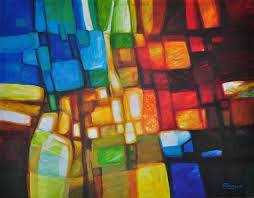

How To Paint Abstract Art Pictures Galleries Wallpaper Paintings
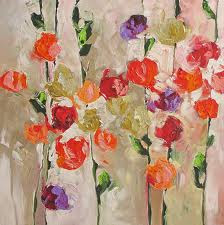

How To Paint Abstract Art Pictures Galleries Wallpaper Paintings

How To Paint Abstract Art Pictures Galleries Wallpaper Paintings

How To Paint Abstract Art Pictures Galleries Wallpaper Paintings

How To Paint Abstract Art Pictures Galleries Wallpaper Paintings

How To Paint Abstract Art Pictures Galleries Wallpaper Paintings

How To Paint Abstract Art Pictures Galleries Wallpaper Paintings

How To Paint Abstract Art Pictures Galleries Wallpaper Paintings

No comments:
Post a Comment